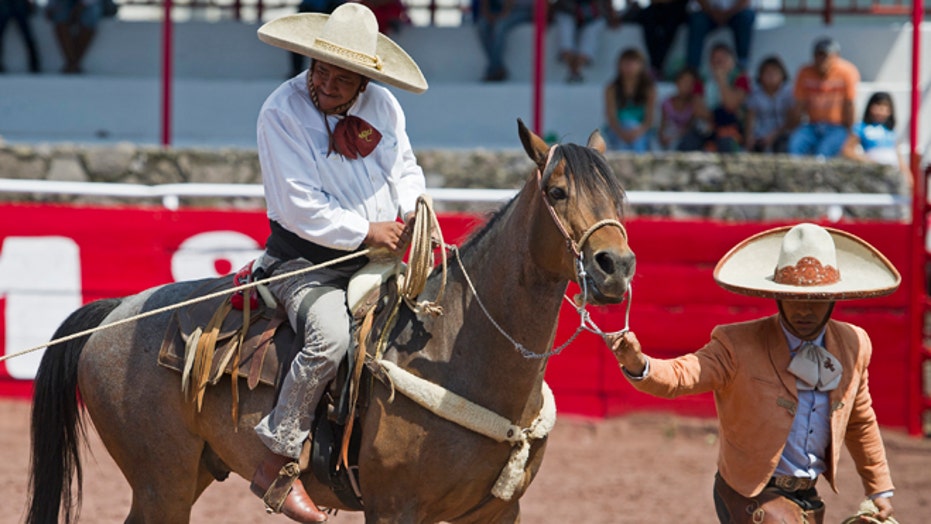Cuautitlán Izcalli, Mexico (AP) – Salvador Espinoza spends his days in a wheelchair due to a spinal cord injury that left him paralyzed from the waist down. When he mounts his horse and tightens the back brace that helps him keep upright in the saddle, he transforms into a charro, or Mexican cowboy.
In the traditional Mexican sport of charreria, this country's version of rodeo, they say you have to be agile, tough and brave.
For Espinoza and other members of the Mexican Association of Paracharreria and Equestrian Therapy, it also means overcoming conditions such as amputations, partial blindness, deafness or paralysis while competing in the same daredevil events as their more able-bodied peers: lassoing, horse-reining, bull-riding and others.
Espinoza needs help mounting the horse and doesn't rely on the traditional stirrups attached to the saddle. But once on horseback, he's a skilled equestrian and a fearless competitor.
"This is where I have learned that athletes in wheelchairs have no limits," said Espinoza, who lost use of his legs 16 years ago when he fell from a four-story building while installing air conditioners. "The only limit is the one people give themselves."
The association was founded in 2010 as part of the Mexican Federation of Charreria, with the stated mission of combating discrimination against people with disabilities and helping integrate them through the national sport.
"There is no other organization that has done this before us," said Norma Angelica Patino Márquez, a doctor specializing in sports medicine who is also president of the paracharreria association, a team comprising 26 members from seven states in Mexico.
"In fact we invented everything, including the rules and system of medical-functional classification like they have in international paralympic sports," Patino said.
The first charreada, or team-competition rodeo, featuring people with disabilities took place in November 2011 as part of the cultural events of the Parapan American Games in Guadalajara, Mexico. In another first, the opening ceremony included a wheelchair performance of the jarabe tapatio, the folkloric tradition known abroad as the "Mexican hat dance."
During a recent charreada in Cuautitlan Izcalli, outside the Mexican capital, Espinoza and four other members of Patino's team competed in all nine rodeo events at a 2,000-seat arena.
Clad in a close-fitting suit, boots and wide-brim sombrero, Espinoza expertly lassoed a wild mare after missing a few times. Later he broke out in a broad grin as the crowd roared its approval of a roping performance in which he and his teammates brought down a small bull. At a charreada, teams go head-to-head in events that are judged not by time but by poise and execution.
Espinoza and his wife, Graciela Sánchez Martínez, who met more than 10 years ago at a wheelchair basketball tournament, have performed in over a dozen charreadas and form the only married couple in the Patino paracharreria team. Sánchez Martínez was diagnosed at age 2 with Guillain-Barre syndrome, a nerve disorder that can cause muscle weakness and sometimes paralysis.
"Charreria holds many Mexican traditions: the music, the outfits, the people," Sánchez Martínez said. "And the fact that I am Mexican, it's part of my traditions, my roots and my taste."
At the recent charreada, Sánchez Martínez represented the team as the Queen of Paracharreria.
Sánchez Martínez said she and her husband have lost count of how many times they've fallen during competition, and she joked that paracharreria actually involves a 10th event — trying to stay on the horse.
"It is a sensation that you can't explain," said team captain Juan Manuel García, who survived a stroke and seven-month coma that left him with muscular weakness on the right side of his body, total loss of mobility in his right leg and three amputated fingers. "Now it is gratifying, now it is something motivating, to know that I can dominate any animal."

